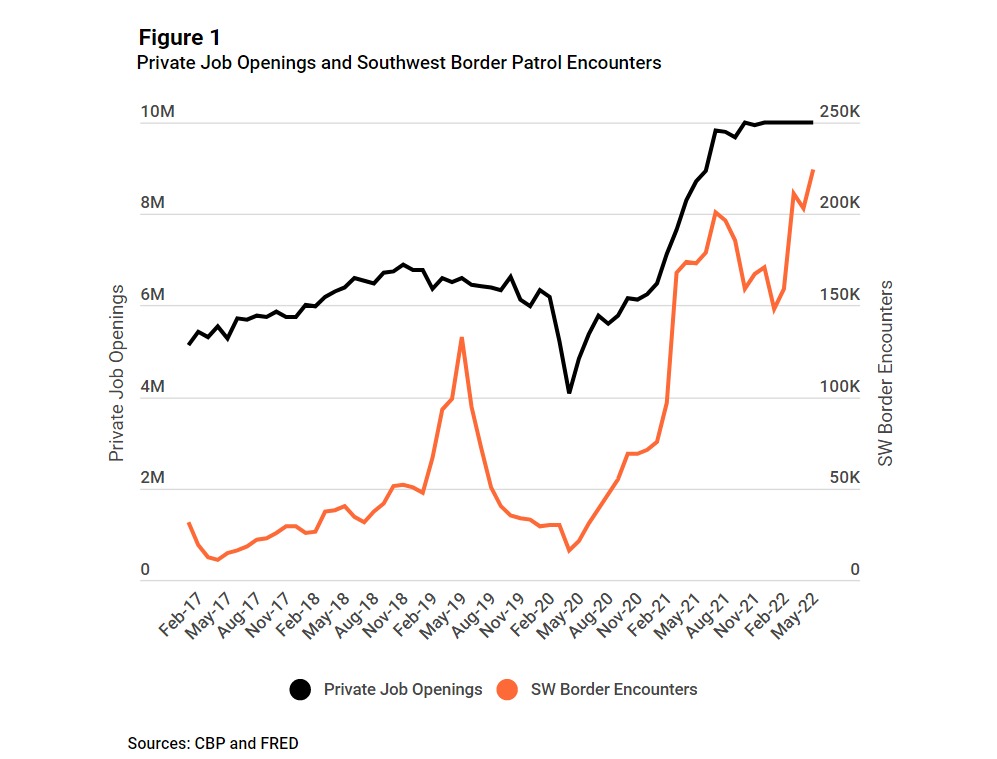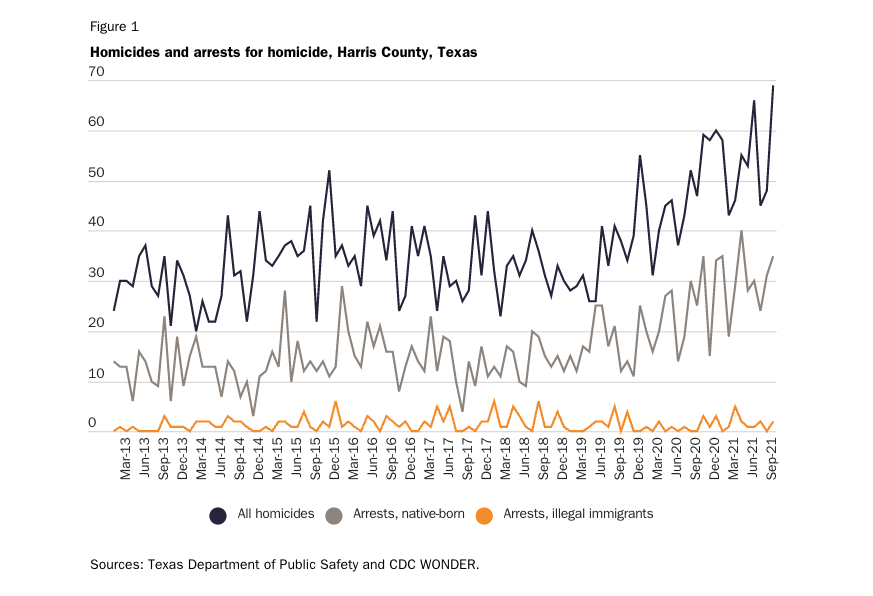Border Patrol Criminal Arrest Statistics in Historical Perspective
Crime committed by illegal immigrants is an important public safety concern. Despite some tragic individual exceptions, such as the alleged murder of Francisco Javier Cuellar by a border crosser who pretended to be a minor, illegal immigrants along the border and in the interior of the United States have far lower crime rates than native‐born Americans.
I recently blogged about how only 2 percent of apprehensions by Customs and Border Protection (CBP) officers were for criminals. In historical perspective, the percent of criminal individuals apprehended by Border Patrol is low at about 1 percent in 2021. Figure 1 shows the rate of criminal individuals arrested by Border Patrol from 1937–2021. The rate of criminal individuals apprehended in 2021 is near the historical low point of zero to 1 percent during the late 1940s through the mid‐1950s. Far from living during a period of high criminal apprehensions along the border, we are likely living during a period of relatively low border criminality.
Figure 1 shows the rate of individual criminals apprehended by Border Patrol, which is calculated by dividing the number of criminal individuals apprehended by Border Patrol by the number of individuals apprehended annually multiplied by 100. Data compiled by Adam Goodman for his new excellent book The Deportation Machine shows government numbers of apprehensions/encounters and recidivism rates going back to 1937. After Dr. Goodman sent me that data, I looked up the original Immigration and Naturalization Service (INS) reports to confirm the numbers. They were correct and I found that the INS recorded the number of individual criminals apprehended by Border Patrol. Border Patrol recidivism data and the criminal apprehension data are available from 1937 through 1989. The criminal apprehensions data then pick up again in 2016. Aaron Reichlin‐Melnik at the American Immigration Council sent me the historical recidivism rate from 2005 to the present. For the missing years (1990–2004 for recidivism rates and 1990–2015 for criminals apprehended), I merely interpolated the numbers. Thus, estimates post 1989 and prior to 2016 should be taken with a grain of salt.
Border Patrol had 1,662,167 encounters with illegal immigrants in 2021, up about 4.1‑fold over 2020. The number of encounters measures how many times Border Patrol took an enforcement action against an illegal immigrant, but it does not measure the number of illegal immigrants encountered. For instance, if an individual illegal immigrant is apprehended 10 times by Border Patrol then that single individual would count as 10 encounters. Fortunately, CBP measures recidivism rates which allow us to identify the number of unique individuals encountered by Border Patrol. In 2021, recidivism rates were approximately 27 percent which means that about 1.2 million individuals were encountered by Border Patrol that year. That’s not a record as it’s just slightly below the number of individuals apprehended in 2000 and 1986.
Border Patrol doesn’t make all of the criminal arrests along the border but data on their arrests go back the furthest. It’s also unclear how well individuals apprehended were checked through criminal databases generations ago. Without the aid of computers, checking fingerprints or criminal records would be more difficult compared to today. As a result, there’s good reason to suspect that criminal apprehensions along the border were much higher decades ago relative to today and we wouldn’t know it because the technology available to Border Patrol is much better today. Furthermore, there are many unlawful border crossers who evade Border Patrol and perhaps a disproportionate share of them are criminals. With these caveats, the rate of criminal apprehensions along the border is historically low.








